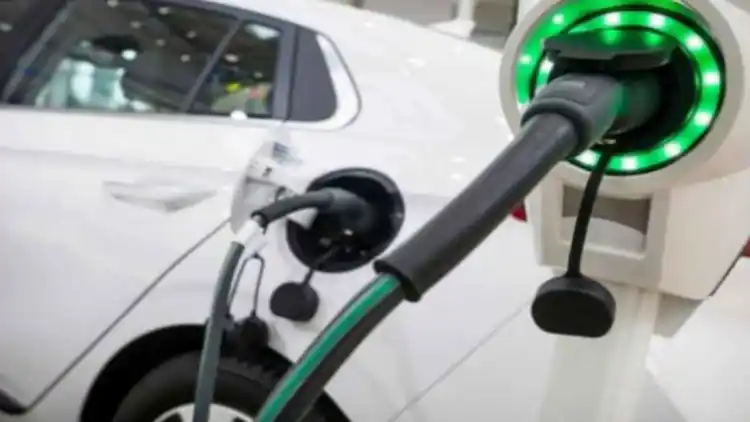- PHEV Car Explained:The Basics
- How a PHEV Car Drives:Power and Range
- Why Choose a PHEV?
- Choosing Your PHEV:What to Think About
- FAQ
Are you curious about newer car types? A PHEV car offers a smart way to drive, mixing electric power with a gas engine. It gives you the best of both worlds, making daily trips cheaper and longer journeys worry-free.
PHEV Car Explained:The Basics
A PHEV car is a special kind of vehicle. It stands for Plug-in Hybrid Electric Vehicle. Imagine taking a regular car with a gas engine and adding a big battery and an electric motor. Then, you make it so you can plug it into an outlet. That's a PHEV. It sits nicely between a traditional gasoline car and a fully electric car. You get to use electricity for short drives and gasoline for longer ones.
Key Parts Making a PHEV Work
To understand how a plug-in hybrid electric vehicle gets you from here to there, let's look at its main parts:
Battery Pack: This is like the car's electric fuel tankKSA TankUAE TankBahrain TankEgypt TankKuwait TankOman TankQatar Tank. It stores a lot of electricity. PHEVs have larger batteries than older hybrid car models. This extra size means you can drive a good distance using only electricity, often more than enough for daily errands or your commute.
Electric Motor: This motor uses power from the battery to move the car. When your car runs on just electricity, it's very quiet. There are no tailpipe emissions. It's great for city driving where you stop and go a lot.
Gasoline Engine: This is the familiar part found in most cars. In a PHEV, the gas engine is there for when the battery runs out of charge. It also kicks in when you need more power, like when you're driving fast on the highway or going up a steep hill. It works with the electric motor to keep you moving without problems.
Charging Port: This is where the magic happens for the electric part. It's a special spot on the car where you connect a plug. This lets you fill up the battery from an outside power source. You can use your regular home outlet, or a faster charging station found in public places.
How a PHEV Car Drives:Power and Range
Driving a PHEV vehicle gives you a lot of flexibility. It switches between power sources smoothly, so you don't even notice.
Switching Between Electric and Gas Power Modes
Your plug-in hybrid knows how to pick the best power source for the road conditions:
Electric Mode (EV Mode): When the battery has enough charge, the car uses only the electric motor. This is perfect for short trips around town. Your car will be super quiet, won't use any gasoline, and won't put out any pollutants from the tailpipe. It's a clean way to drive for your daily needs.
Hybrid Mode: For longer trips, or when the battery power gets low, the car's computer smartly uses both the electric motor and the gas engine together. It tries to get the best fuel efficiency. Sometimes, the gas engine might even help charge the battery a little as you drive. This seamless blend means you always have power when you need it.
Understanding PHEV Range and Charging
One of the best things about a PHEV car is its electric range.
Electric-Only Range: Most new PHEV models can go about 50 to 80 kilometers (around 30-50 miles) just on electricity. This is enough for many people's daily drives, like going to work, picking up kids, or running errands, without using any gas. This is a huge benefit for saving money and helping the environment.
Charging Your PHEV: Charging times can be different. If you use a regular home outlet, it might take a few hours to fully charge the battery. If you have a faster charging setup at home (Level 2 charger) or use a public charging station, it will charge much quicker. Many people charge their PHEV car overnight at home, so it's ready to go electric in the morning.
Why Choose a PHEV?
Plug-in hybrid electric vehicles are becoming very popular. There are many good reasons why drivers in the Gulf region like them:
Lower Fuel Costs: This is a big one. You can use cheap electricity for most of your daily driving. This means you buy a lot less expensive gasoline. Imagine saving hundreds of AED or SAR each month on fuel! For example, if your commute is 40 km, you might not use gas at all for your daily drive.
Reduced Emissions: When you drive in electric mode, your car produces zero tailpipe pollution. This makes the air cleaner for everyone. Even when the gas engine runs, overall the plug-in hybrid is much cleaner than a car that runs only on gasoline. It's a step towards a healthier environment.
Less Worry: With a PHEV, you get the best of both worlds. You enjoy the quiet, clean driving of an electric car. But you also have the gas engine as a backup. This means you never have to worry about running out of power on a long trip. You can just fill up with gas at any gas station, just like a regular car. No "range anxiety" here!
Potential Savings: Many governments and local authorities offer benefits for hybrid car owners, including PHEVs. These might include tax breaks, lower registration fees, or sometimes even special parking spots. These savings can add up and make owning a PHEV even more attractive.
Choosing Your PHEV:What to Think About
Deciding if a plug-in hybrid car is the right fit for you depends on your lifestyle. Here are some things to consider:
Your Daily Drive: Think about how far you drive each day. If your usual trips are within the electric-only range of a PHEV, then it's a perfect match. You'll use very little gasoline, saving you money and reducing your carbon footprint.
Charging Setup: Consider where you live and work. Can you plug in your PHEV car easily at home overnight? Having easy access to charging makes owning a PHEV much more convenient and cost-effective. Public charging stations are also becoming more common in cities across the Gulf.
Models and Options: The car market now offers many hybrid car options, including a growing number of PHEVs. You can find them as sleek sedans, family-friendly SUVs, and even some trucks. Look at different brands and models to see what suits your needs, your driving style, and of course, your budget.
FAQ
Q:How far can a PHEV go on just electricity?
A:Most modern PHEV models are designed to cover typical daily commutes and errands. They can usually travel anywhere from 50 to 80 kilometers (about 30-50 miles) using only the battery's charge. This means many drivers can complete their entire daily routine without using a single drop of gasoline, making it very economical.
Q:What's the difference between a PHEV and a regular hybrid car?
A:The biggest difference is the plug! A PHEV car has a much larger battery. You must plug it in to fully recharge that battery and get its full electric range. A regular hybrid car, on the other hand, has a smaller battery that recharges itself primarily through the gas engine and when the car brakes. It cannot be plugged in and has a much shorter electric-only range, if any at all.
Q:Do I need special equipment to charge a PHEV?
A:No, not really. You can charge a PHEV vehicle using a standard household power outlet (Level 1 charging). This is the slowest way, but it works, especially for overnight charging. Many owners choose to install a faster Level 2 charging station at home for more convenience, as it speeds up charging significantly. Plus, there are growing numbers of public charging stations in shopping malls, workplaces, and other locations where you can charge your plug-in hybrid while you're out and about.
Read More:
How Big Is the VW Tiguan? A Full Guide to Its Space and Practicality
How Much Is the Jetour T2:Current Price Guide & Where to Find Deals
How Much Is a 2025 Volkswagen Tiguan? Your Gulf Region Pricing Guide













